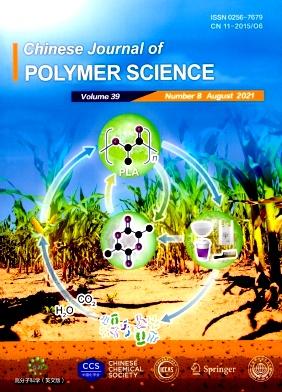Monitoring the Interfacial Polymerization and Membrane Fouling of Selective Layer with Boronate Ester Linkages via Aggregation-induced Emission
Abstract
It is important to understand the evolution of the matter on the polymer membrane surface. The in situ and real-time monitoring of the membrane surface will not only favor the investigation of selective layer formation but can also track the fouling process during operation. Herein, an aggregation-induced emission (AIE)-active polymer membrane was prepared by the interfacial polymerization of a cyclodextrin-based glycocluster (CD@Glucose) and a tetraphenylethylene derivative modified with boronic acid groups (TPEDB) on the surface of a polyacrylonitrile (PAN) ultrafiltration membrane. This interfacial polymerization method can be stacked layer-by-layer to regulate the hydrophilicity and pore structure of the membrane. With the increase in the number of polymer layers, the separation and antifouling properties of the membrane gradually improved. Owing to the AIE property of the crosslinking agent TPEDB, the occurrence of interfacial polymerization and the degree of fouling during membrane operation can be monitored by the fluorescence distribution and intensity. With the aggravation of membrane fouling, the fluorescence decreased gradually, but recovered after cleaning. Therefore, this AIE effect can be used for real-time monitoring of interfacial polymerization as well as membrane fouling.

 求助内容:
求助内容: 应助结果提醒方式:
应助结果提醒方式:


